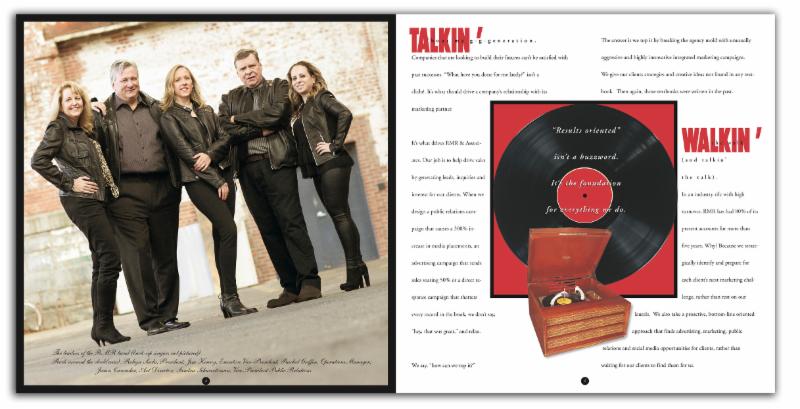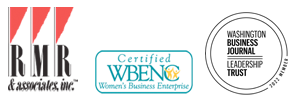Eight Sure-Fire Steps to Better Sales Collateral
By Robyn Sachs, President and CEO of RMR & Associates
You’re in a face-to-face meeting, and someone has asked for more information about your company, product, or service. This opportunity calls for good sales collateral.
Forget the “nobody reads them” myth. The truth is a customer with a problem to solve will read your brochure to see if you can help.
Sure, it takes a salesperson to close the deal on a big-ticket item or customized service; but powerful collateral keeps you in the running. Like websites, weak collateral can eliminate you before the first cut.
So here are eight techniques guaranteed to put more selling power into your sales collateral.
-
Start selling on the cover.
A marketing brochure must answer the prospect’s number one question: “What’s in this for me?” Waste no time getting to the answer. Put a marketing message on the cover. If you can clearly and creatively express the main benefit, so much the better.
-
Sell benefits, not features.
Why should anyone buy what you sell? Brochure copy written with selling power, focuses on benefits to the customer, not features of the product or service. Of course, customers need to know your product’s features. Just be sure to describe them in terms of the benefits users derive. For example:
Feature:
- Fewer components
- Colorful GUI
- 24 x 7 operations
- Guarantee
Benefit:
- Lower Cost
- Easy to use
- Fast Service
- No Risk
-
No soft sells. Be persuasive.
Your sales collateral makes the sales pitch when you can’t be there to deliver it yourself or after you leave the meeting, so use words that sell and put them in your headlines and subheads. A Yale University study on auditory persuasiveness called these the 12 most persuasive words in the English language: discovery, easy, guarantee, love, health, money, new, proven, results, safety, save and you.
-
Write for one person at a time.
Look at the last word in the preceding paragraph and remember that’s who you’re writing for. Forget schoolbook English that tells you to write in third person. Pay no attention to anyone who says you’re writing for “an industry,” “a market,” or “a company.”
Write “you” and the reader thinks “me” and is already closer to buying your product; and that’s exactly what you want.
-
Tell your story in a logical order.
Here’s what every prospect wants to know:
Do you understand my problem? How can you solve it? Can you prove it? What’s it going to cost? Who are you, anyway? How do I buy?
Write your brochure in that order. Do not begin with your company history or pictures of your building. That’s what your prospect cares about least. You can address cost in a separate piece.
Help the reader follow your message by breaking it into sections. In brochures of 8 pages or more, each 2-page spread should address a separate topic. With fewer pages, use headlines and subheads to identify topic areas.
-
Photos make it real.
If your product is real, prove it with photos. Show it in action. Do you sell a service? Then depict situations that relate to the benefits you offer.
Use illustrations or infographics to show what can’t be photographed…inner workings or connections, chemical processes, mental activity and – of course – products that don’t yet exist. Technical drawings together with photos make a great combination in technical sales literature.
-
Captions are a must.
Explain what the reader is seeing. Photo captions can repeat points from your copy. Put your most important points in the headlines, subheads, and photo captions, since that’s all many readers will ever read.
-
Ask for the sale!
At the end, suggest what the prospect should do next. Tell them how to buy or order from you. Then, make it as easy as possible for them to respond, whether by phone, website or in person.
RMR’s own Greatest Hits brochure shown below, exhibits many of the tips outlined in our article above.


